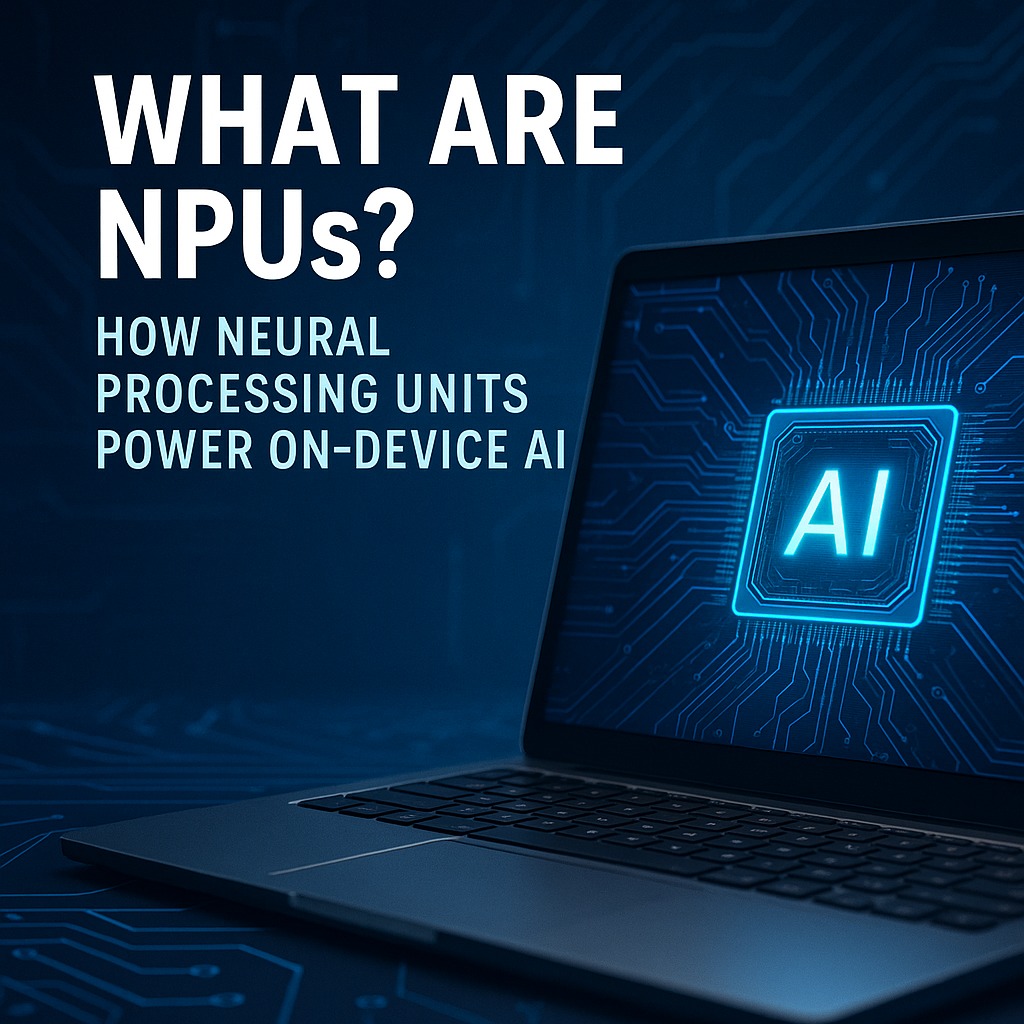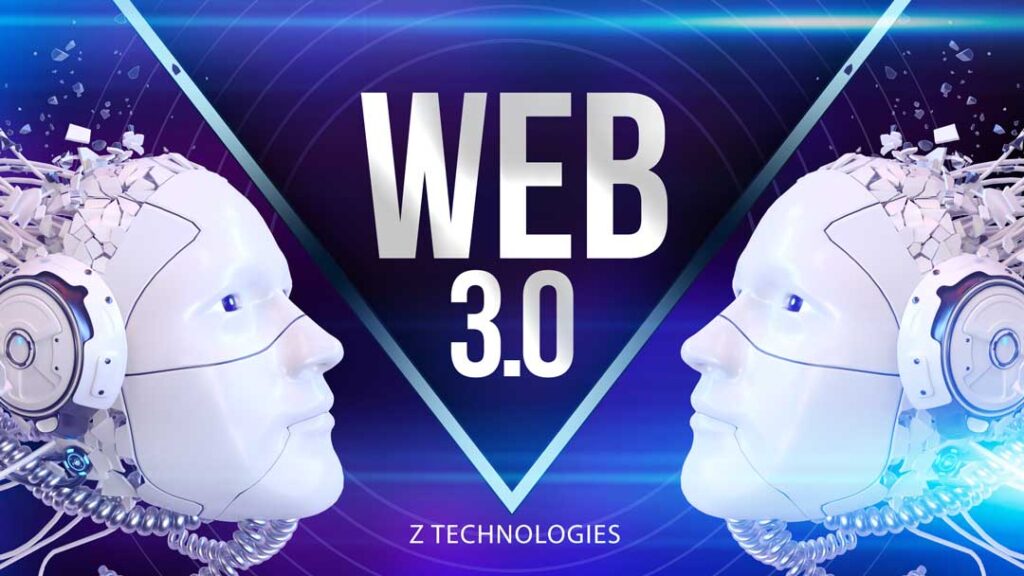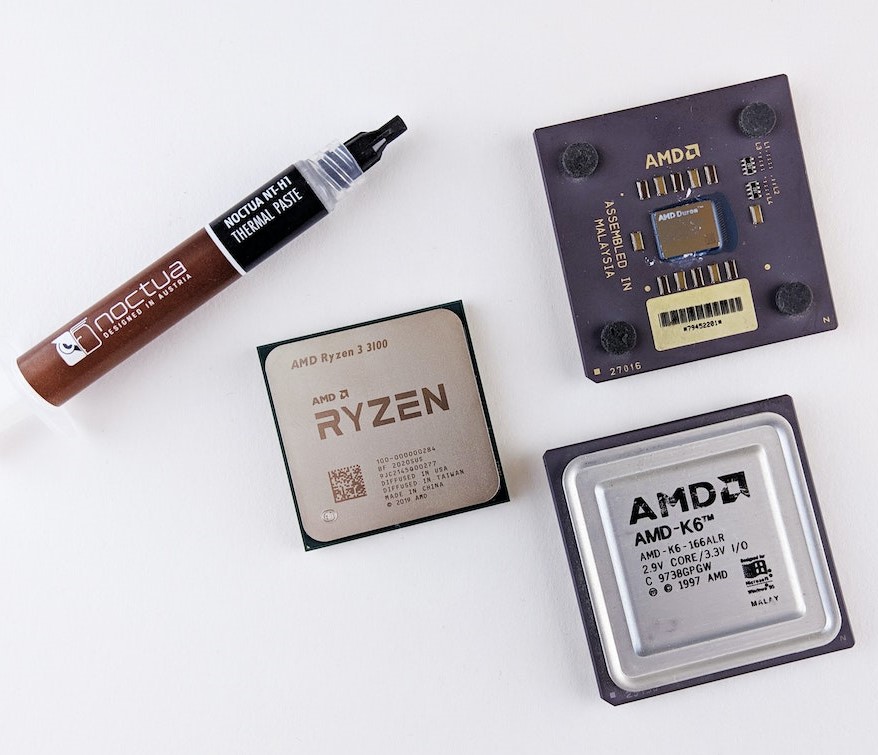1. What is NPU, and in Laptops?
A Neural Processing Unit (NPU) is an AI accelerator to specializes in processing machine learning inference operations. In contrast to CPU or GPU, NPU runs on high-throughput (sub-)int8 or FP16 precision computation that neural network excels. Modern laptops increasingly incorporate CPUs, GPUs, and NPUs into a system-on-chip (SoC). This allows for to performance of real-time tasks such as live transcription, image generation, and biometric recognition features fully on-device, without requiring network connectivity or uploading the data to the clouds.
2. Important advantages of On‑Device AI using NPUs
Ultra-low latency AI: You can use a translation app, transcription tool, or video-enhancing tool on demand, even offline.
Better privacy: Data processing occurs on the device, so no personal data needs to be uploaded to third-party servers.
Energy saving and longer battery life: NPUs will use much less power than CPUs or GPUs to run AI activities, allowing the user more processes per cycle of battery usage.
These advantages bring such search terms as energy-efficient AI laptop NPU, on-device AI laptop, no cloud, and AI laptop with privacy features to popularity.
3. Performance of NPU in 2025: Meteor Lake, Snapdragon X Elite, Lunar Lake, Ryzen AI
Intel Meteor Lake ( Core Ultra series)
- The NPU is capable of delivering 11 TOPS
- Total AI performance: approximately 34 TOPS (combined CPU, GPU, and NPU)
- Appropriate to light AI processing found in voice transcription, and camera effects
Qualcomm snapdragon X elite
- Includes 45 TOPS NPU
- Total AI performance: maximum up to 75 TOPS
- Windows Copilot+, multimedia AI work, and generative AI that require next to no battery life
Intel Lunar Lake (Core Ultra 200V collection)
- The performance of NPU lies between 45-48 TOPS
- The amount of AI capacity is more than 100 TOPS
- Construction and offline use of Copilot+ were created specifically with full AI application support
Strix Point/ AMD RyzenAI 300
- XDNA 2 NPU architecture can produce 5055 TOPS
- It specializes in empowering builders and professionals to enable local generative AI, editing, and modeling capabilities
4. NPU Performance Comparison
| Platform / Chip | NPU Performance (TOPS) | Total AI Performance (TOPS) | Typical AI Use Cases |
|---|---|---|---|
| Intel Meteor Lake (Core Ultra) | ~11 | ~34 | Basic transcription, light AI tasks |
| Qualcomm Snapdragon X Elite | 45 | ~75 | Copilot+, generative AI, image/video AI |
| Intel Lunar Lake (Core Ultra 200V) | 45–48 | 100+ | Offline LLMs, AI agents, full Copilot+ features |
| AMD Ryzen AI 300 series | ~50–55 | ~50+ | Advanced creative tasks, generative image/text AI |
5. On-Device AI enjoyed by NPUs in the Real World
- Microsoft Copilot+ support: Real-time capabilities such as Recall, Live Caption, Studio Effects, and Click-to-Do are configured to use 40+ TOPS NPU to offer complete independent performance in an offline situation.
- Local assistant apps: You can summarize documents, convert voice to text, and reverse translations, without the use of a cloud service.
- Generative AI pipelines: On-device generative workloads, e.g., text generation with an LLM or by generating an image with Stable Diffusion.
- These AI-based and locally executed features include background deletions, video calls fixes (while looking into the camera, for example), as well as photo upscaling, which are all real-time media improvements.
6. The Future and Writing about NPUs
Software Ecosystem Readiness: Look, a lot of AI frameworks have not yet been optimized to run on NPUs. Supporting inference is increasingly simple, but training and dynamic AI are both still GPU-intensive.
Model compatibility: NPU is more optimized suited to running pre-trained models; other, more general or crafted AI tasks might need the support of a GPU or CPU.
Unified Compute Chips: The second generation of compute-based AI-centralized processors can develop more unity between CPU, GPU, and NPU by allocating them on unified tiles, to be more efficient. Such chips may form a new standard of AI performance in laptops and provide greater TOPS-per-watt values.
Summary
With the advent of offline applications of AI and smart computing, based for privacy. Neural Processing Units are an increasingly crucial component of the laptop hardware. Devices featuring NPUs up to 50-100TOPS now, devices from Intel, Qualcomm, and AMD, support real-time AI processing on-device. That opens the doors to some powerful capabilities, such as Copilot+, translating languages, and creating local AI-generation capabilities. Turning laptops into something smarter, faster, and more secure, without requiring the cloud.
1. How does NPU compare with GPU? NPU vs GPU
Specifically devoted to AI and machine learning inference operations. NPU (Neural Processing Unit) is a featured orchestrator to deliver effective, well-timed, and efficient AI inference applications. It also executes operations such as matrix multiplication and convolution in a faster way, with low-precision formats (INT8, FP16).
GPU (Graphics Processing Unit), in its turn, is more general-purpose, and it can be used both with AI workloads and with high-performance graphics rendering.
Although GPUs continue to be utilized to train AI and on more computation-intensive applications, the NPUs are faster and more energy-efficient, once on-device AI, such as voice recognition and image processing tasks, are required.
2. What is the mechanism behind NPU architecture? (NPU Architecture)
NPU architecture concentrates on the parallel processing unit to boost the performance of a particular operation of a neural network, including multiply-accumulate (MAC) operations. A matrix compute engine and local memory buffers, with pipelines optimized on low-precision arithmetic, are common properties to most NPUs.
Newer NPU structures, such as Intel NPU 4, Qualcomm Hexagon, and AMD XDNA 2, are calculated to deliver very high TOPS (trillions of operations per second) at very low power, in mobile devices and laptop computers.
3. Does NVIDIA produce an NPU? (NPU NVIDIA)
By 2025, NVIDIA is not making an independent NPU as in the case of Intel or Qualcomm. Rather, the workload of AI, which traditionally could be executed by NPUs, is handled by the GPUs of NVIDIA (particularly, those with Tensor Core support).
NVIDIA, however, is said to be developing next-gen unified processors on edge devices, possibly with dedicated logic blocks targeting AI, just like NPUs.
4. Who makes up NPU chips? Who makes NPU chips made by?
There are quite a few companies already manufacturing NPUs:
- Intel: Core Ultra (Meteor Lake) and Lunar Lake processors equipped with an in-built NPU
- Qualcomm: Snapdragon X Elite Hexagon NPU
- AMD: Ryzen AI 300 series, XDNA 2 NPU
- Apple: M-series chip Neural Engine (M1, M2, M3)
- Samsung: Exynos chipsets NPU
- MediaTek: APU ( AI Processing Unit ), that have the same purpose as NPUs
5. What is the name of the AMD NPU? (NPU AMD)
AMD The NPU by AMD is known as NPU within the Ryzen AI platform, which is driven by XDNA architecture.
In 2025, the Ryzen AI 300 series (Strix Point) contains XDNA 2, which can achieve 50 55 TOPS of AI performance. The NPUs made by AMD are programmed to quicken Windows Copilot+, local AI applications, and real-time image/video processing firm on laptops.
6. What is the NPU Compute Accelerator? Computer Accelerator device (NPU Compute Accelerator)
An NPU Compute Accelerator device may be any hardware, internal or external, that allows accelerating AI inference operations. In laptops, it naturally resides as a chip in the SoC.
These accelerators in enterprise and embedded markets can be PCIe-attached cards or USB-attached devices that allow offloading AI computing from the central processor or the graphics processor.




